Living With CVI
Chronic Venous Insufficiency (CVI) is a condition that affects the legs’ veins, leading to various symptoms that can impact daily life and overall well-being. Understanding your symptoms, how CVI is diagnosed, and the treatment options available can help you manage this condition effectively.

Recognizing the Symptoms
CVI can manifest in several ways, and symptoms may vary from person to person. Being aware of the common signs can help you seek timely medical advice and intervention:
- Swelling in Legs or Ankles: This is often one of the first signs of CVI, where you might notice your legs or ankles swelling, especially after long periods of standing or sitting.
- Tight Feeling in Calves: You may feel a sense of tightness or heaviness in your calves, which can indicate poor blood flow.
- Pain that Subsides with Rest: Walking or standing might cause discomfort or pain, which typically eases when you rest.
- Varicose Veins: Visible, enlarged veins often signal CVI and can be both a cosmetic and medical concern.
- Changes in Skin Coloration: The skin around your ankles may take on a brownish hue due to the pooling of blood.
- Ulcers and Non-healing Wounds: Advanced CVI can lead to skin ulcers, particularly around the ankles, that heal slowly, if at all (Cleveland Clinic).
Treatment & Management
Managing Your Condition
Living with CVI means adopting lifestyle changes and possibly undergoing treatment to manage symptoms and prevent progression. Here are some strategies (NYU):
- Compression Garments: Wearing specially designed stockings helps improve blood flow and reduces swelling.
- Regular Exercise: Activities like walking or cycling can enhance circulation and muscle tone.
- Elevating Your Legs: This simple practice can alleviate swelling and discomfort.
- Monitoring Your Diet: Reducing salt intake can help minimize swelling and water retention.

Treatment Options
Treatment plans for CVI are tailored to individual needs and may include:
- Medications: For symptoms like venous eczema or infections.
- Minimally Invasive Procedures: Techniques like endovenous laser ablation or sclerotherapy that close off affected veins.
- Surgery: In severe cases, procedures such as vein stripping or bypass surgery may be necessary (Hopkins).
Understanding and managing CVI is a collaborative effort between you and your healthcare team.
By recognizing symptoms early, adhering to treatment plans, and making lifestyle adjustments, you can effectively manage CVI and maintain a high quality of life.


